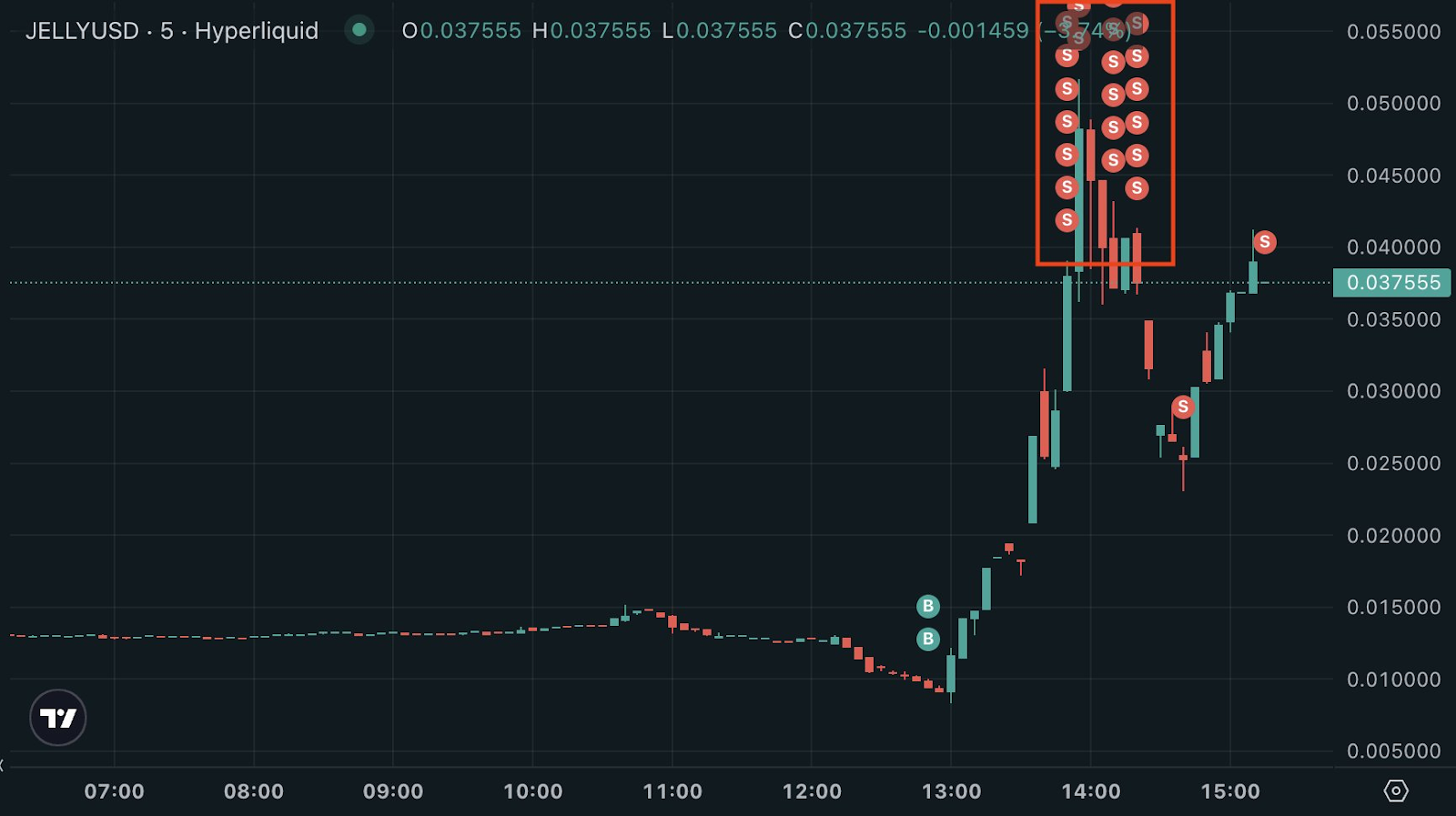Source: Cointelegraph Original: "{title}"
Despite the recent $6.2 million exploit incident at Hyperliquid, which highlighted the risks associated with decentralized cryptocurrency exchange (DEX) infrastructure, it continues to challenge the dominance of centralized platforms.
According to a report by Cointelegraph on March 27, a cryptocurrency whale made at least $6.26 million in profit by exploiting the liquidation parameters on Hyperliquid with the Jelly my Jelly (JELLY) meme coin.
Bobby Ong, co-founder of CoinGecko, noted that this was the second significant incident on the platform in March.
In a post on X on April 3, Ong stated, “$JELLYJELLY was a more notable attack, and we saw Binance and OKX launch perpetual contracts, which raised accusations of collusion to attack Hyperliquid.” He added:
“Clearly, centralized exchanges (CEX) feel threatened by decentralized exchanges, and they will not watch their market share erode without a fight.”
Hyperliquid ranks as the eighth largest perpetual contract exchange by trading volume among all centralized and decentralized exchanges. This positions it “ahead of some well-known legacy institutions like HTX, Kraken, and BitMEX,” Ong cited a research report from April 4.
The growing trading volume of Hyperliquid is beginning to erode the market share of other centralized exchanges.
Top derivatives exchanges by open interest. Source: CoinGecko
Hyperliquid is the 12th largest derivatives exchange, with CoinGecko data showing its 24-hour open interest exceeding $3 billion—though it still lags far behind Binance's $19.5 billion.
According to Ryan Lee, an analyst at Bitget Research, this incident could undermine user confidence in emerging decentralized platforms, especially when the actions taken afterward appear overly centralized.
“Hyperliquid's interventions—despite the decentralized ethos—have been criticized as centralized, which may cause investors to be wary of similar platforms,” Lee said.
The unidentified Hyperliquid whale successfully exploited Hyperliquid's liquidation parameters by deploying millions of dollars in trading positions.
According to post-analysis by blockchain analytics firm Arkham, this whale opened two long positions worth $2.15 million and $1.9 million, respectively, as well as a $4.1 million short position, which effectively offset the long positions.

Trades of the Hyperliquid exploiter. Source: Arkham
When the JELLY price surged by 400%, the $4 million short position was not immediately liquidated due to its large size. Instead, it was incorporated into the Hyperliquidity Provider Vault (HLP), a system designed to liquidate large positions.
As of March 27, despite Hyperliquid freezing and delisting this meme coin, citing “suspicious market activity involving trading tools,” the unidentified whale still held 10% of the total supply of the meme coin, valued at nearly $2 million.
The attack on Hyperliquid occurred two weeks after the collapse of a Wall Street Wolf-themed meme coin, initiated by Hayden Davis, co-creator of Official Melania Meme (MELANIA) and Libra (LIBRA) tokens, which was launched with 80% of the internal supply and subsequently plummeted over 99%.
Related: Hyperliquid falls victim to a flash attack “pulling the plug” to save itself, while CEX enters to stabilize the market or stab from behind?
免责声明:本文章仅代表作者个人观点,不代表本平台的立场和观点。本文章仅供信息分享,不构成对任何人的任何投资建议。用户与作者之间的任何争议,与本平台无关。如网页中刊载的文章或图片涉及侵权,请提供相关的权利证明和身份证明发送邮件到support@aicoin.com,本平台相关工作人员将会进行核查。




